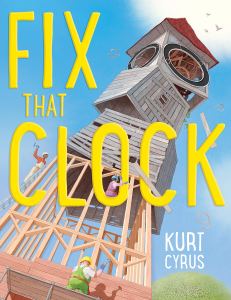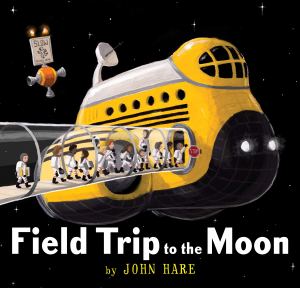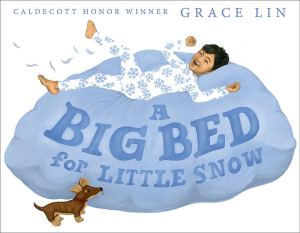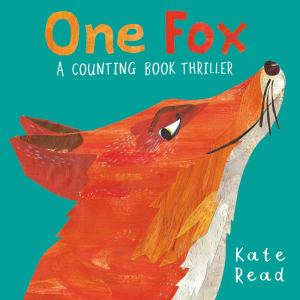Before I put together my Best of 2019 list, I want to post one more list of my favorite recent picture books. These are all books that I’ve read since the last time I posted a picture book list like this, although some of them were published earlier in the year. They’re all 2019 titles, though. There are quite a lot of really good 2019 picture books that I’m only just now getting around to reading. Therefore, every book on this list is one that I thought was especially great and that I highly recommend. I’ve included an informal review of the top eight, but I also added a few other titles at the end that I felt were worth including because of their subject matter. I shortened that down quite a bit because of how long and complicated this post was getting; I had felt compelled to add some commentary and discussion of terminology that just didn’t fit into the list format. So now, I’ve just got two categories of honorable mentions at the end. But first, here are the ones that I think rose to the top of the (approximately 60 or 70) picture books I’ve read recently.
The Tale of the Tiger Slippers by Jan Brett
Jan Brett has been an important and popular figure in children’s literature for longer than I’ve been alive. Many of her earlier works have become established classics. Generally, her books are adaptations of folk tales, and they’re always illustrated in elaborate detail with intricate borders and illustrated sidebars that sometimes contain their own sub-stories. I realize that I frequently use words like “elaborate” and “detailed” to describe the illustrations in picture books, but Jan Brett’s illustrations always go above and beyond in that regard. This new title is no exception. You can read all the words in a matter of minutes, but you could take hours looking at the pictures. It’s well-suited for all ages, except maybe babies, but certainly everyone from preschoolers to adults. My only complaint about this book is that there isn’t an author’s note that goes into any degree of detail about the origin of the story or the changes that have been made to it. It does have a blurb on the inside of the back book jacket, where the author’s biography typically goes, in which Brett refers to the original story and describes the experiences that inspired her adaptation and the choice of tigers for the main characters. But I had to turn to other sources to look up more information about the original story, and I discovered that Brett took more artistic liberties than her blurb indicates. The biggest differences are the geographic setting (the original story takes place in Baghdad, but Brett sets it in India) and the general moral. (It had been a warning about greed and stinginess, but this adaptation has an implied moral about remembering and acknowledging the things that brought you success) I’m actually inclined to prefer Brett’s take on the story, but someone could make a case that this book borders on cultural appropriation by not being clearer about the cultural origin and original message of the folktale.
 Fix That Clock by Kurt Cyrus
Fix That Clock by Kurt Cyrus
This fun, brightly colored book features a team of construction workers who are fixing a decrepit clock tower. The text rhymes and follows a satisfyingly even meter for the most part. Until I went through counting syllables just now, I actually didn’t even notice that a few lines here and there are a syllable or two off. In most of those cases, it’s for the sake of making the sound effects come in threes. There are some “bang bang bang”s and “tock tick clank”s, printed in larger font so that they stand out on the page. Those kinds of sounds are generally nice touches in preschool-level picture books; they enhance the child appeal and can help build early literacy skills in a couple different ways. (That is, because funny sounds encourage young children to be aware of individual phonemes, and because the words’ prominent position on the page can help pre-literate readers notice that the written word corresponds to the spoken word, which is a more challenging concept than most adults realize) Even beyond the early-literacy merits of the book, it’s appealing because of its subject matter. Construction is a popular topic, and this story would fit well into a construction-themed storytime, especially one that could use some human construction workers to balance out its anthropomorphic construction vehicles. There are no smiling cement mixers or friendly bulldozers in this book; it’s all about people, the clock, and the animals that have taken up residence in the clock tower. The story ends on a sweet note as the construction workers build birdhouses and mouse cubbies into the tower so that all those animals still have their home.
 Field Trip to the Moon by John Hare
Field Trip to the Moon by John Hare
To be honest, I’m not often very fond of wordless picture books, but this is a good one, and I’ll concede that the absence of text adds a level of poignance in this case. It’s a quiet story about a quiet kid who gets separated from her class while they’re visiting the moon. They didn’t notice that she had stepped away for a moment of solitude while she draws a picture of the Earth. She gets more solitude than she had wanted, at least until the moon critters show up. Although initially frightened of her, they appreciate her artwork and are intrigued by her crayons. She shares the crayons and they happily draw all over themselves, each other, and a nearby rock. Then the school spaceship returns and a grownup (The teacher? Her parent? I’m not sure) runs out to meet her. Her new friends hide, so the grownup assumes that she drew on the rock herself and scolds her. But as they walk away, she looks back to see the moon critters waving at her, each with a colored crayon in its hand. They’ve left her with just one crayon, and it’s the light gray crayon she needs to draw them during the trip home. By the way, that last page is the only time when we see her face. Prior to that, her spacesuit helmet hides her features. I guess you can kind of see her face on the cover, but it’s not the same because it’s not close-up. There are subtle points to be made about individuality, communication, and friendship, (or the lack thereof, on all three of those points) not to mention the value of art. Or you could just read this as a simple, child-friendly science fiction story about a kid meeting fascinating creatures that no one else knows are there.
Bear is Awake: An Alphabet Story by Hannah E. Harrison
On the one hand, this is a simple, basic alphabet book. The text consists entirely of single words (with the exception of a couple two-word phrases) that begin with the letter featured on that page. But on the other hand, when combined with the beautifully detailed illustrations, those individual words tell a silly story with a much more detailed plot than what is typical of a basic alphabet book. The story starts with A for awake and follows the (B) big bear to the (C) cozy cabin where he rings the (D) doorbell. He (E) enters the house and eats all the (F) food, which makes the girl (G) grumpy. But she has an idea. She helps the bear put on an (H) hat and they go out. I’m not going to retell the whole story, but the L stands for library, the M stands for market, and the R stands for return, so you get the idea. As you would expect from such a book, the girl and the bear become friends and are having lots of fun together by the end of the day. But eventually, the girl takes the bear back to the woods and he goes back to sleep in his cave.
 A Big Bed for Little Snow by Grace Lin
A Big Bed for Little Snow by Grace Lin
While I don’t feel that this book quite lives up to its predecessor, A Big Mooncake for Little Star, it comes close. And it certainly has a lot of the same appeal factors. It’s an etiological story (better known as porquoi stories or how-things-came-to-be stories) that personifies Little Snow as a young boy jumping on his big, puffy bed. The feathers that fall out are snow. It’s an original story, but it reads like a retelling of an old folk tale. Just like in A Big Mooncake for Little Star, it has beautiful but simple illustrations against a plain background, and the only character other than the title character is the mother, who lovingly tolerates her mischievous child’s antics. This is a great preschool storytime book, although I think it also has a lot of appeal for older kids as well. At least in my opinion, it’s age-appropriate for kids who are too young for most stories that require this degree of narrative comprehension. A three- or four-year-old will probably need an adult to explicitly point out that Little Snow lives in the sky and his bed is a cloud and the feathers are snow. As clear as that is, children at that age tend to be so literal that they might not realize that Little Snow isn’t a kid just like them and that his bed isn’t just like theirs. But with a little explanation from an adult, the story will make sense, and it’ll serve as an introduction to more complex and abstract plots they’ll read in the future.
 One Fox: A Counting Book Thriller by Kate Read
One Fox: A Counting Book Thriller by Kate Read
Like Bear is Awake above, this is a concept book with very few words that still succeeds in telling a story with an actual plotline, and an entertaining one at that. This time, it’s a story about “one famished fox” with “two sly eyes” that have just caught sight of “three plump hens”. In case you’re wondering how the story ends and don’t mind a spoiler, the counting takes us up to “ten sharp teeth”, but it turns out that there were a lot more hens than the fox realized. We’re left with “one hundred angry hens” and “one frightened fox”. The mixed media illustrations are vivid and beautiful, largely consisting of the bright orange of the fox against a solid black background because it’s night. The fox is impressively realistic. In my experience and opinion, mixed media isn’t the most realistic method of illustrating a picture book. That’s not a bad thing; realistic art is not the only kind of good art, especially for young children whose eyes are drawn to bright colors, simple shapes, and clear lines. But it’s pretty great when a book’s illustrations have all those traits and still look realistic.
Small in the City by Sydney Smith
This book is written in the second person, but at first, it isn’t clear who the narrator is talking to, except that it’s someone who presumably feels small and alone and frightened, just like him. The text is brief and succinct; the pictures do most of the talking. The child wanders through a busy city on a cold and gloomy winter day, and he’s clearly worried, even as he says, “But I know you. You’ll be all right.” He proceeds to offer some advice about which areas to avoid and which places would be a good spot to stop and rest. It gradually becomes apparent that he’s speaking to a cat. He uses phrases like, “you could curl up,” “[burrs] might get stuck in your coat,” and “[my friend] will pet you”. Then he puts a “lost cat” poster on a streetlight post and heads home as the snow falls more heavily. His sadness and worry is evident, even as he repeats the line, “But I know you. You’ll be all right.” Spoiler: We never actually see the cat, but the final page is just a picture of paw prints in the snow, and they seem to be going towards the door.
 Llama Destroys the World by Jonathan Stutzman, illustrated by Heather Fox
Llama Destroys the World by Jonathan Stutzman, illustrated by Heather Fox
This is an incredible book that blends a sci-fi concept and somewhat dark humor with a light-hearted food theme, smiling cartoonish animals, and child-friendly, easy-to-read text. All right, the bit about complex experiments, data analysis, and imminent doom might not technically be child-friendly, and the concept of a black hole will probably go over the heads of most preschool readers. But it’s about cutesy anthropomorphic animals who eat too much dessert, which offsets the science words and portents of doom enough to make them hilarious instead of problematic. I suppose that this book probably has more adult appeal than child appeal despite the bright and simple nature of the illustrations, but there will be some kids for whom this is the perfect book. I strongly recommend it for a very specific target audience: an unusually intelligent child with a surprisingly developed sense of absurdist humor. Alternatively, just give it to a grownup and let them have fun sharing it with a child who probably won’t get it. The child still gets the benefit of enjoying quality time reading a book with a loved one, and the grownup gets a good laugh. Everyone wins. (Except the world itself, since Llama destroyed it)
Other noteworthy recent picture books, categorized by topic:
Holiday or seasonal stories:
Freedom Soup by Tami Charles and Jacqueline Alcantara: New Year’s Day, which is also Haitian Independence Day
Around the Table that Grandad Built by Melanie Heuiser Hill, illustrated by Jaime Kim: Thanksgiving
Finding Christmas by Robert Munsch, illustrated by Michael Martchenko: Christmas, obviously
Wintercake by Lynne Rae Perkins: Generic winter holiday (I read this as being about the first day of winter, but I expect that most bookstores or libraries with a “holiday” designation would consider it a Christmas book)
A Day for Skating by Sarah Sullivan, illustrated by Madeline Valentine: Winter
Some Snow Is… by Ellen Yeomans, illustrated by Andrea Offermann: Winter
Informational picture books:
The Important Thing About Margaret Wise Brown by Mac Barnett, illustrated by Sarah Jacoby: Biography, although it doesn’t sound like a typical biography because the information is phrased in an informal, conversational way and includes a lot of tangential details
The Thing About Bees by Shabazz Larkin: This one is probably still best categorized as a regular fiction picture book, but it does include a lot of nonfiction information including an illustrated guide to different varieties of bees and wasps
Sing a Song: How “Lift Every Voice and Sing” Inspired Generations by Kelly Starling Lyons, illustrated by Keith Mallett: Follows a fictional family over several generations of African American history as they pass down a real song that played a significant role in the Civil Rights Movement
Fry Bread by Kevin Noble Maillard, illustrated by Juana Martinez-Neal: Again, technically fiction, but there’s a lengthy informational section at the end which includes a recipe for fry bread, a discussion of its history and variations, and some comments on the experiences of modern Native Americans